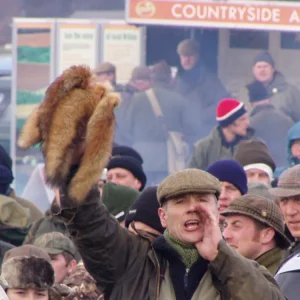Foxes are still preserved by hunts in artificial earths to ensure the availability of an animal for the chase. There are usually two entrances with a chamber set between them as a living area for the foxes. The chamber is often brick-built with a lid of paving stone. The entrances are typically tunnels of 9-inch diameter pipe or of building block design. Metal grids or large stones can be usually found close to to the entrance to the artificial earth to be used to block the earth on hunting days.
Campaigners have known of the existence of artificial earths for many years. The very first issue of the hunters’ bible, Baily’s Hunting Directory, published in 1897 describes how to build them.
Indeed, there are few hunts that boast of no artificial earths. Investigators believe that the highest number of artificial earths is the 31 sites in the Thurlow hunt country in Cambridgeshire. The largest most elaborate and possibly the most expensive artificial earth known to the campaigners is in the Blencathra hunt country, a notorious Fell pack.
Fox Coverts Owned by Hunts
The write-up for the Sinnington Hunt in Baily’s Hunting Directory 1997-1998 includes the following: “The Hunt owns several of the vale coverts which seldom fail to hold a fox”.
The Sinnington are not alone. Coverts under the control of hunts still contain artificial earths. As these are designed to attract foxes, it cannot be any surprise to hunts if their hounds “accidentally” find a fox within such a covert.



